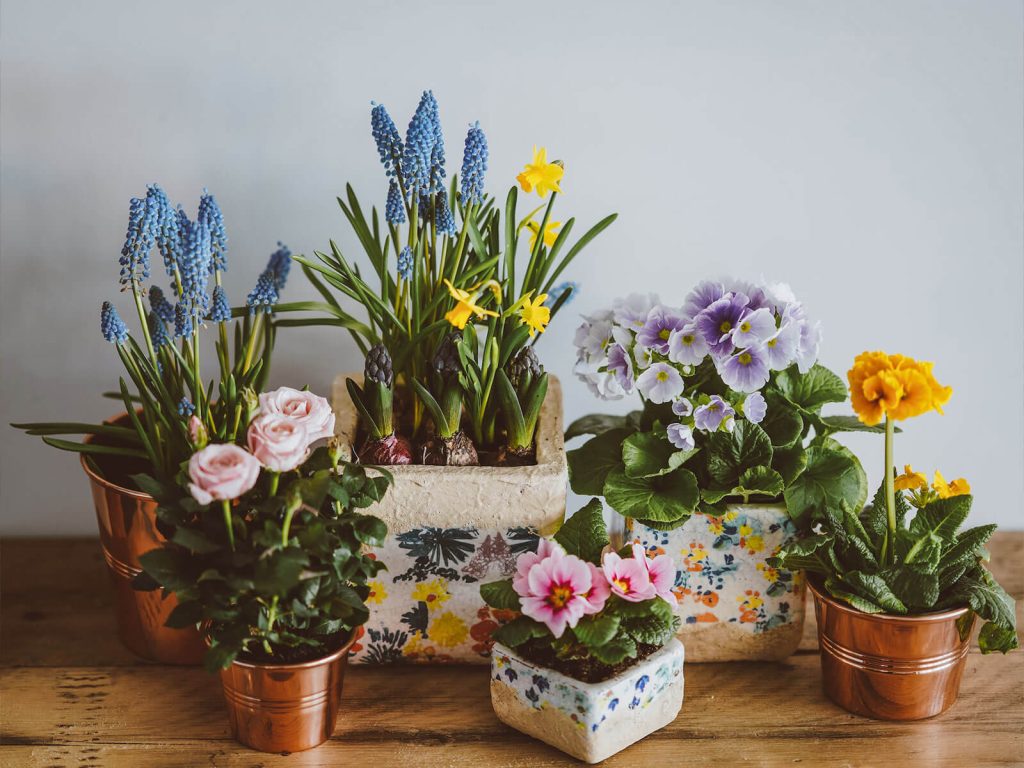The splash of vibrancy your home needs can always be complemented by colorful indoor plants.
Colorful indoor plants are your best bet if you are big on home décor. Selecting an option that matches the theme of your home and knowing strategic positions to locate can in so small a way beautify your home.
Knowing the options available, and checking if these plants would complement the theme of your home, toxicity level, as well as their needed care, is important in choosing colorful indoor plants for the home.
Getting yourself one or two of these colorful indoor plants is something you should try if you are keen on taking the appearance of your home to another level. We have provided the most colorful indoor plants you may want to add to your home and the most important things to know about them.
Tap here to see a list of flowering indoor plants you can add to the mix.
Why Choose These Colorful Indoor Plants For Your Home?
You may be shocked to know that asides from the beautifying effect colorful indoor plants bring to the home, there are other benefits of choosing colorful indoor plants for your home.
Here is a list of benefits you would be getting from choosing these colorful indoor plants:
- They help to improve your mental health: Not only would colorful plants give your home an interesting outlook, but constantly seeing them helps in keeping you relaxed and aids concentration. This is because when we are surrounded by nature, we tend to be calmer and less stressed.
- Some indoor plants are natural air detoxifiers: Some plants are not only colorful but are air purifiers, eliminating toxic substances that may be in the atmosphere of your home.
- Helps you heal faster: A sure way to improve the healing process of a patient is to surround them with colorful plants that would brighten their mood and increases their energy.
20 Easy to Care For Colorful Plants Options to Choose From
There are many colorful indoor plants out there but we have provided you with a list of the most colorful ones.
1. Anthurium
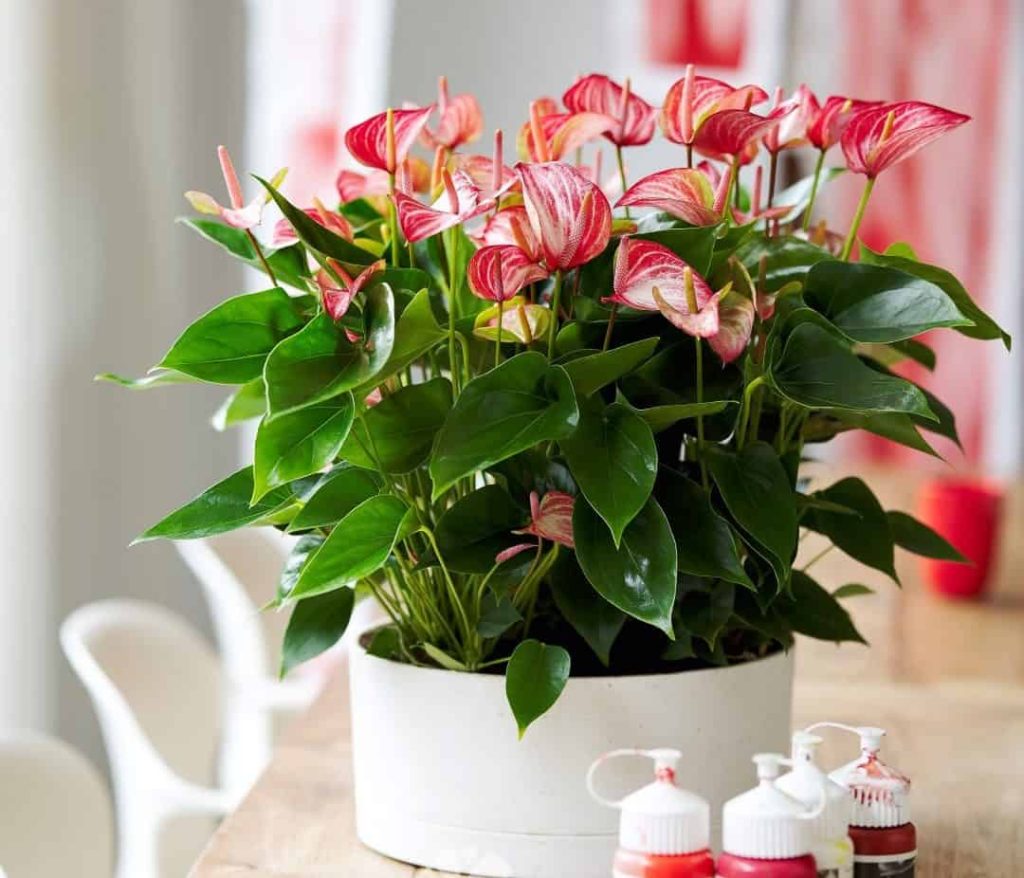
The Anthurium which is also called the tail flower grows out red, white, pink, and sometimes purple leaves when it blooms.
This tropical plant is a great complement to a white-themed home. The Anthurium gives a full bloom when it receives adequate lighting and care.
Anthurium Care Tips:
- Keep away from pets and kids as they are toxic
- Use a colorful drilled container
- Fertilize moderately; fertilizing once a month would do
- Repot once it becomes pot bound
- Regularly prune to maintain shape and bright colors.
2. Amaryllis
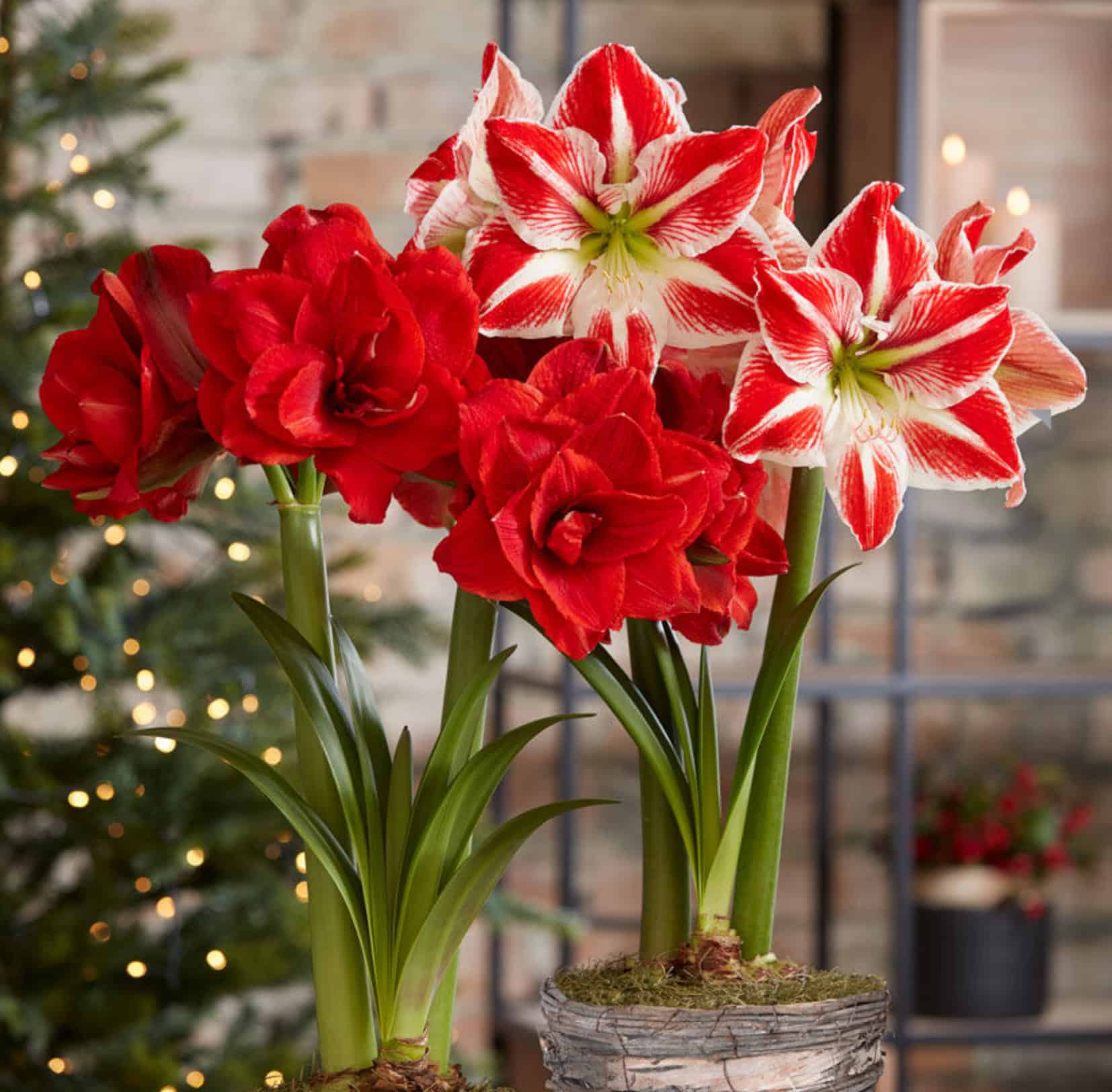
The Amaryllis is a trumpet-shaped plant that is a low-maintenance plant and should not be a bother for beginners.
This South African plant brings the splash of color your home needs as it comes in red, white pink, and burgundy while some rare ones have multiple colors. The beauty of the amaryllis is appreciated when placed in a strategic position to complement your home.
Amaryllis Care Tips:
- The soil must never get soggy
- Use beautiful pots or containers to enhance their beauty.
- Regularly mist to prevent dust build-up
- Cut off yellow and damaged leaves as soon as possible.
3. Bromeliads
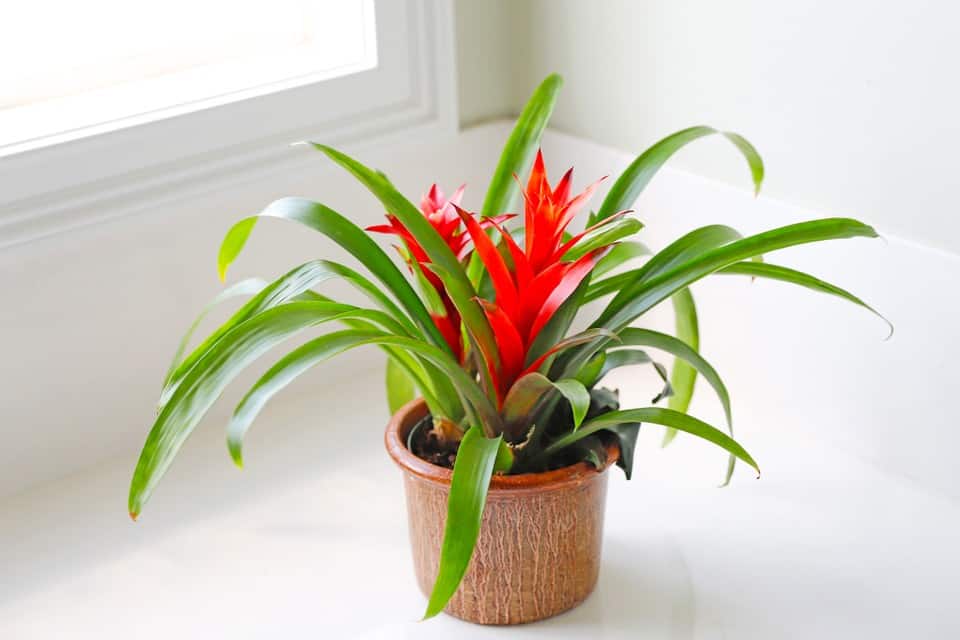
Bromeliads are another set of colorful indoor plants that would make your home or office very appealing. The Bromeliad likes to be kept where it can receive medium light and they bloom best when they are adequately watered.
Excessive watering is a big threat to the growth of your Bromeliad. The tropical plant is prone to pest infestation because of its cup so always be on the look for them as they can damage the plant.
Bromeliads Care Tips:
- Fill up the cup at the center of the Bromeliad
- Change water in Bromeliad cup weekly
- Mist regularly to prevent dust build-up
- When pruning, use sterilized shears or scissors.
4. Coleus

The coleus is not only multicolored but also has beautifully marked patterns on its leaves. Because they come in a variety of colors, you can creatively combine varieties for a splashy burst.
This easy-to-maintain plant detests cold temperatures so it must be grown in cool areas.
Coleus Care Tips:
- Keep away from pests
- Water as needed
- Requires bright indirect light
- Mist regularly
- Use drilled containers
- Take out the water regularly if saucepans are used.
5. Gerber Daisy
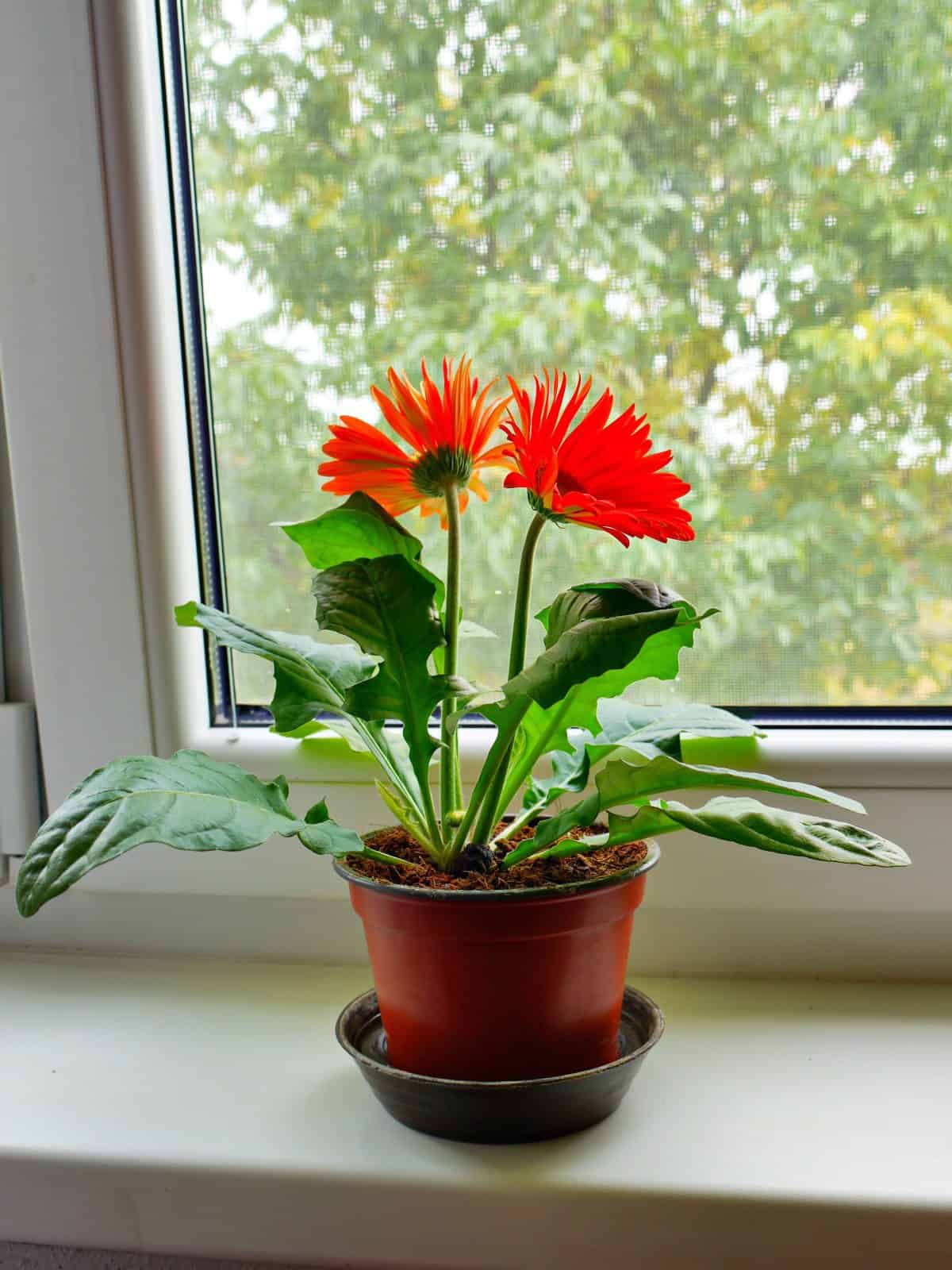
One indoor plant that calls for attention is the Geber daisy. The large-shaped leaves with bright red flowers are attractive for your home. The beauty of the Gerber daisy is enhanced when placed in a conspicuous position in matching colorful containers.
You could tone down the beauty of the Gerber daisy if you use dull containers to pot them. The Gerber daisy grows best in organic soil with adequate watering. Placing the plant where it would not receive bright indirect light would slow the growth and you may be disappointed with the outcome.
Gerber Daisy Care Tips:
- Trim neatly
- Water moderately
- Mist regularly.
6. Hibiscus

With hibiscus, not only would you be taking home decor to another level, some varieties have a mildly sweet fragrance which makes them a great choice for your home. The tropical plant comes in bright hues of red, purple, white, and pink.
If you are a beginner, the hibiscus can be grown at your convenience because it is easy to maintain.
Hibiscus Care Tips:
- Grow in a loamy soil
- Prune regularly
- Grow in humid areas
- Place in bright indirect light
- Mist regularly.
7. Moth Orchids
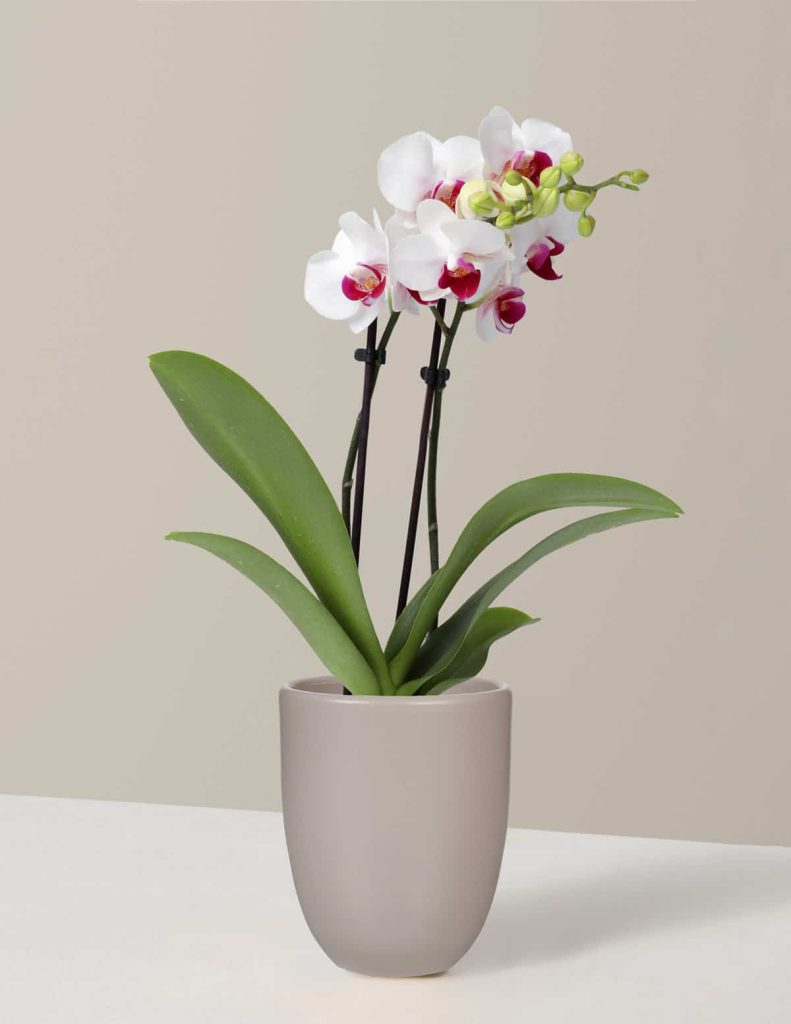
The Moth Orchid which grows into tall spikes comes in a variety of colors ranging from white, pink, and lavender, to yellow. At full bloom, one spike could produce 20 flowers, and they can grow up to 36 inches tall depending on the variety. Low-humid areas are best for them.
You could place them at the corners of your living room or center tables. When choosing a location, ensure the plant is placed where it can receive bright light. Artificial lights can also help.
Moth Orchids Care Tips:
- Ensure soil is well-drained organic soil
- Keep away from dark areas
- If natural light is insufficient, make use of fluorescents
- Never allow the topsoil to dry out
- Keep soil moist.
8. Poinsettias
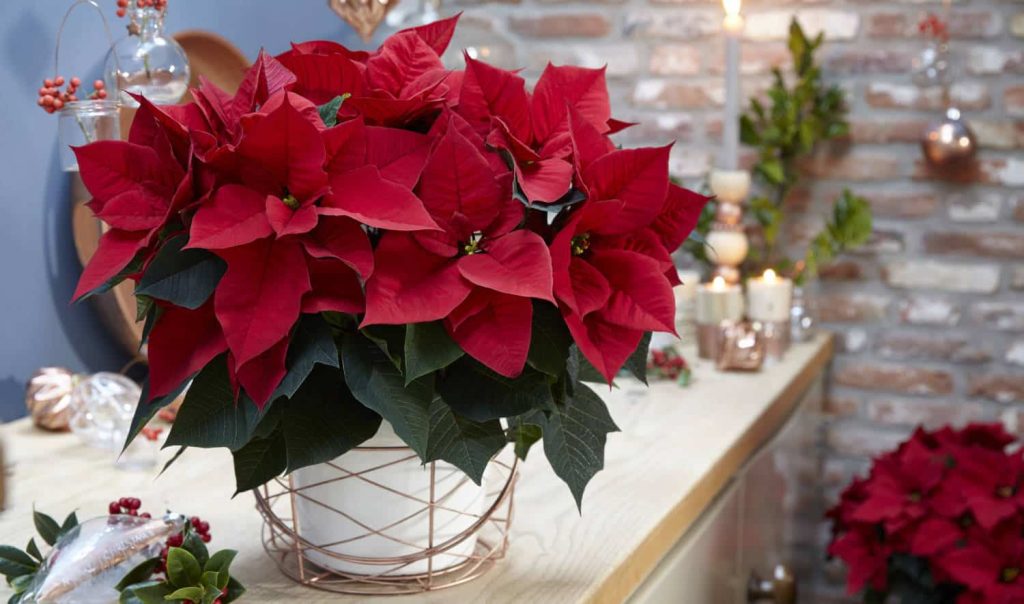
If you want a flashy outlook in your home, Poinsettias should be among your choices. The Mexican plant comes in hues of different bright colors and can do wonders for the appearance of your home. The tropical Poinsettia, when placed in an area with medium light can grow to its full potential.
With Poinsettia, you could decide to be creative. Instead of placing the pots on the floor, you can consider hanging them with basket hangers but you would be a tad more careful with them to ensure all parts get adequate light and water.
Poinsettias Care Tips:
- Keep soil mixture moist
- While pruning, use gloves as the sticky saps from the plant could cause irritation
- Never place in dark areas.
9. Triostar Stromanthe
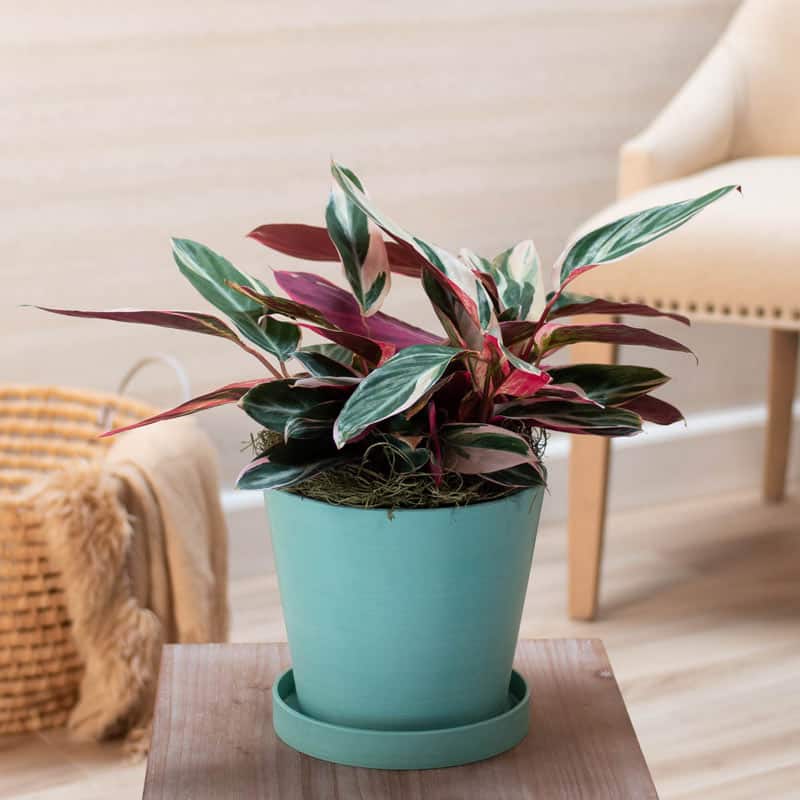
The striped plant which comes in hues of pink and green can do a great deal to your home especially when they compliment the decor of your home. The low-maintenance plant is a great choice for beginners because they do not require much experience to propagate and nurture.
Knowing where to place and providing basic requirements is important in maximizing the potential of your Triostar. Because they have wide leaves, they should be placed in locations where they can show their beauty and also get adequate light sufficient for thriving.
Triostar Stromanthe Care Tips:
- Ensure soil is moist
- Use drilled pots
- Keep in humid areas.
Read our complete Triostar Stromanthe care guide for more in-depth care tips.
10. Polka Dot Plants
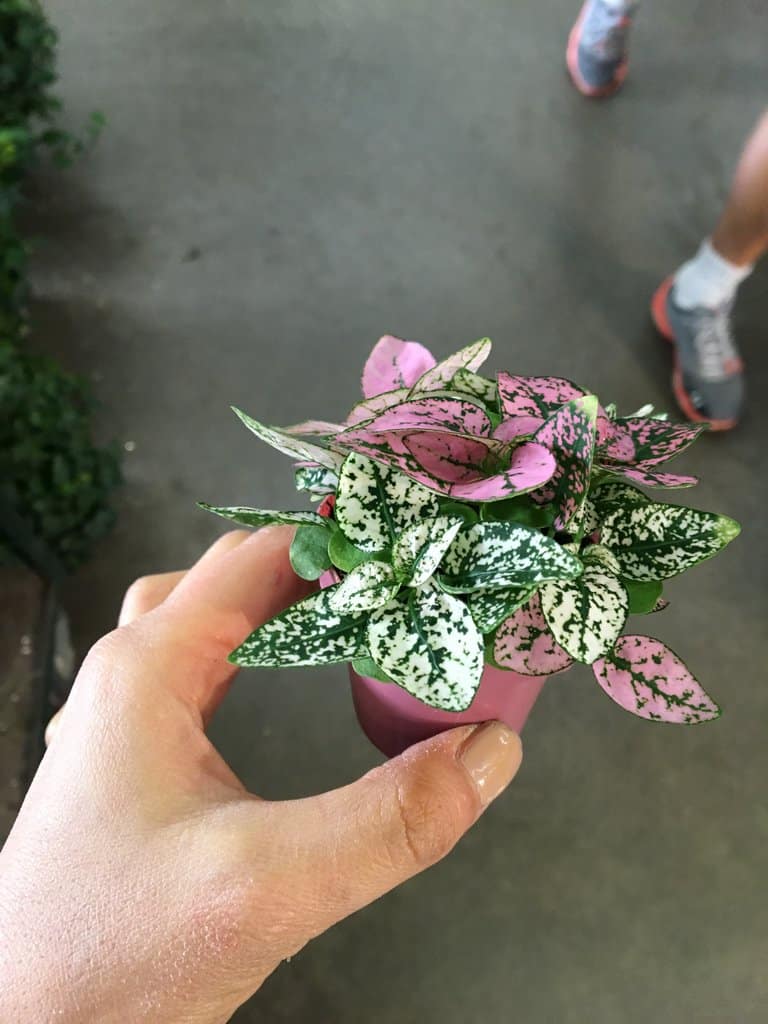
Every variety of the polka dot plant brings an appealing effect to your home regardless of its colors.
Ensure the variety is a perfect blend with your home’s appearance, especially the wall decor and furniture. Polka dot plants would thrive when they are moderately watered and ensure their soil never dries out.
Polka Dot Plants Care Tips:
- Reduce watering when leaves start turning yellow
- Change location if plants start wilting; that’s an indication they are not receiving adequate light.
11. Purple Velvet Plant
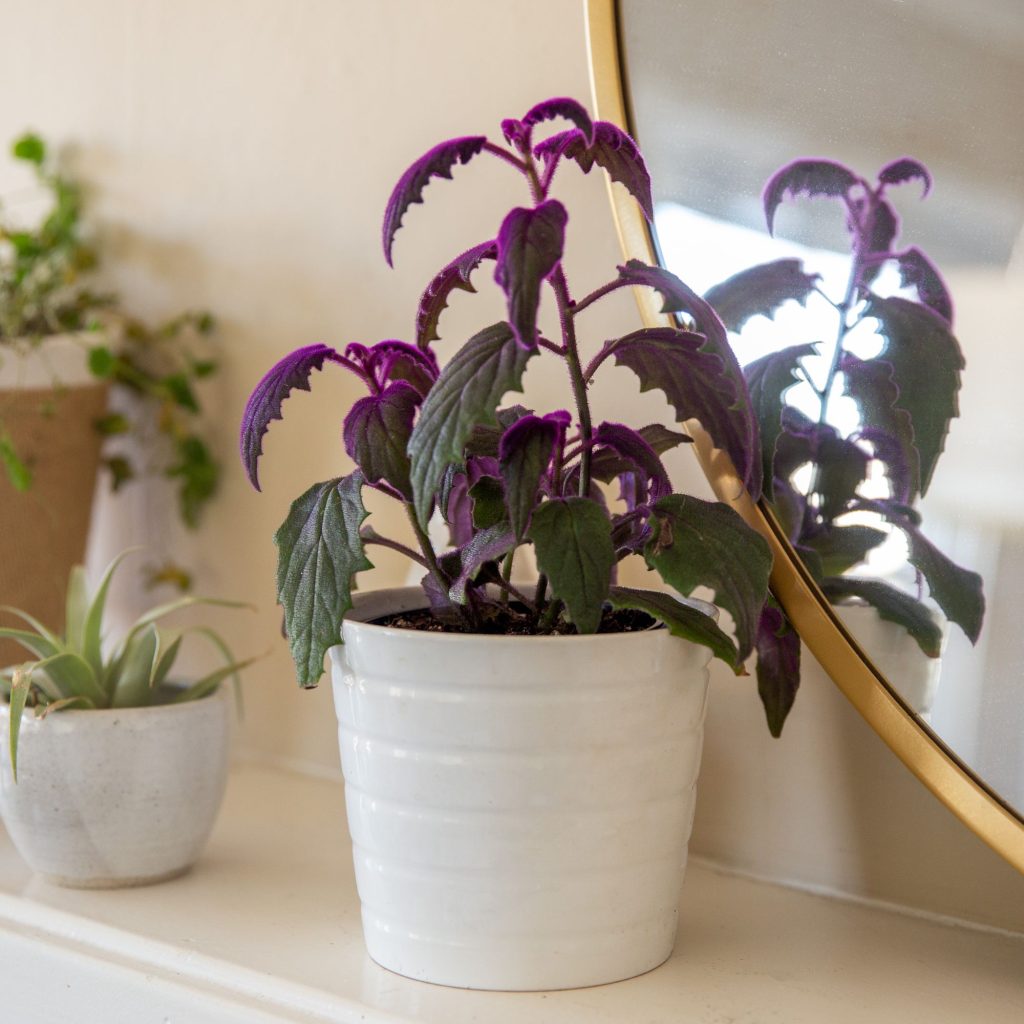
The purple velvet plant is a popular houseplant and is loved for its cool purple foliage. The colors are known as passion purple Gynura aurantiaca and the colors are considered unusual for a houseplant. The velvet purple leaves get their colors from the thick hair and it is a unique woody plant.
Although the appearance might start to deteriorate after a while, you can easily have it propagated and it also makes an attractive trailing plant. In addition, you get a gleaming appearance from this plant when it is placed in the light.
Purple Velvet Plant Care Tips:
- Prune aggressively to maintain the look
- Be careful not to overwater it, allow 25% of the soil to dry before watering
- Provide regular bright light to maintain its purple color
- Avoid wetting the foliage.
12. Bird of Paradise Plant
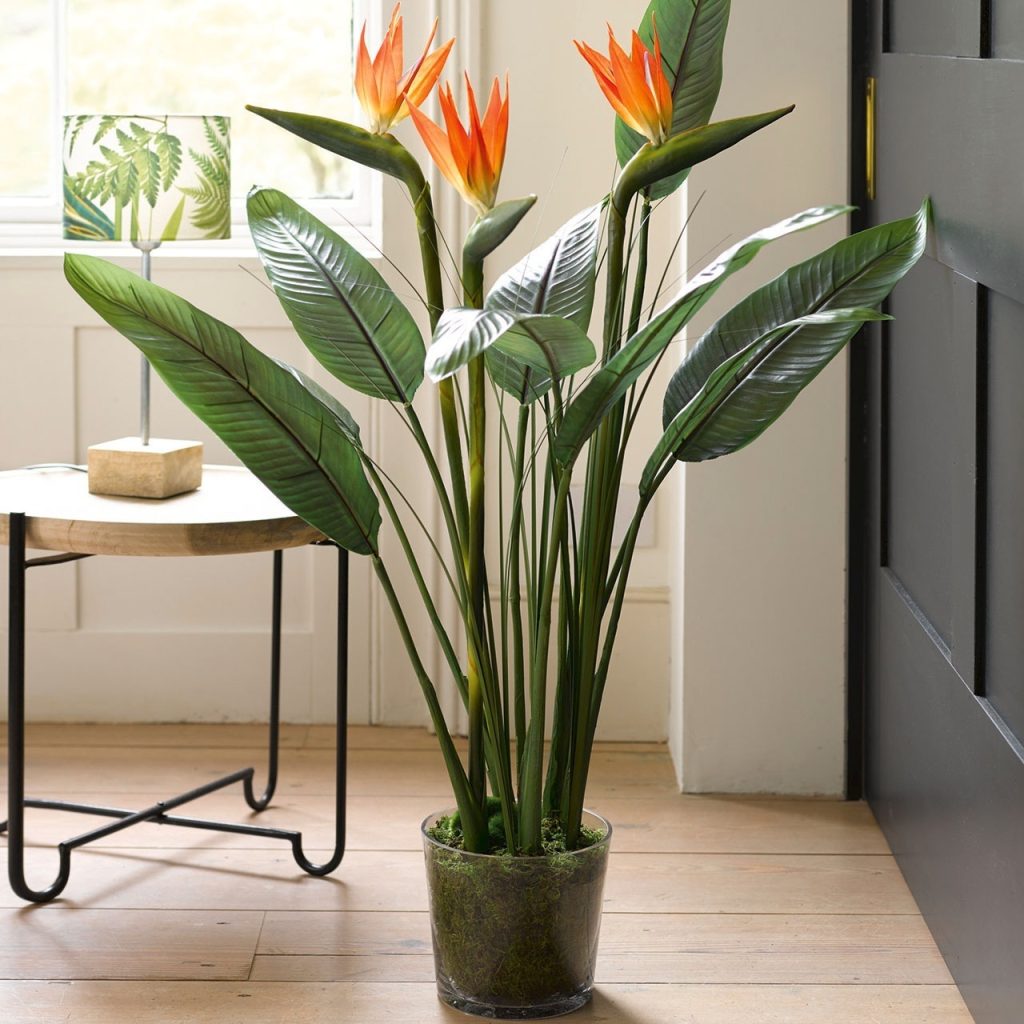
Birds of paradise is actually a plant considered to be the queen of indoor plants. This plant belongs to the family Paradisaeidae of the order Passeriformes and it’s not only the colors that can light up your home but the size that makes the living space look exciting. This is a large tropical plant with an unusual gorgeous leaves design that can be mistaken for a bird.
This indoor plant is also one of the most gorgeous tropical plants. It is a low-growing jungle plant with unique exotic plants and is quite relative to the banana plant.
Bird of Paradise Care Tips:
- Allow it to dry out slightly before watering
- Water often in bright light and less in low light
- Provide regular feeding
- Give it a lot of sun at least 6 hours of full sunlight
13. Chinese Evergreen
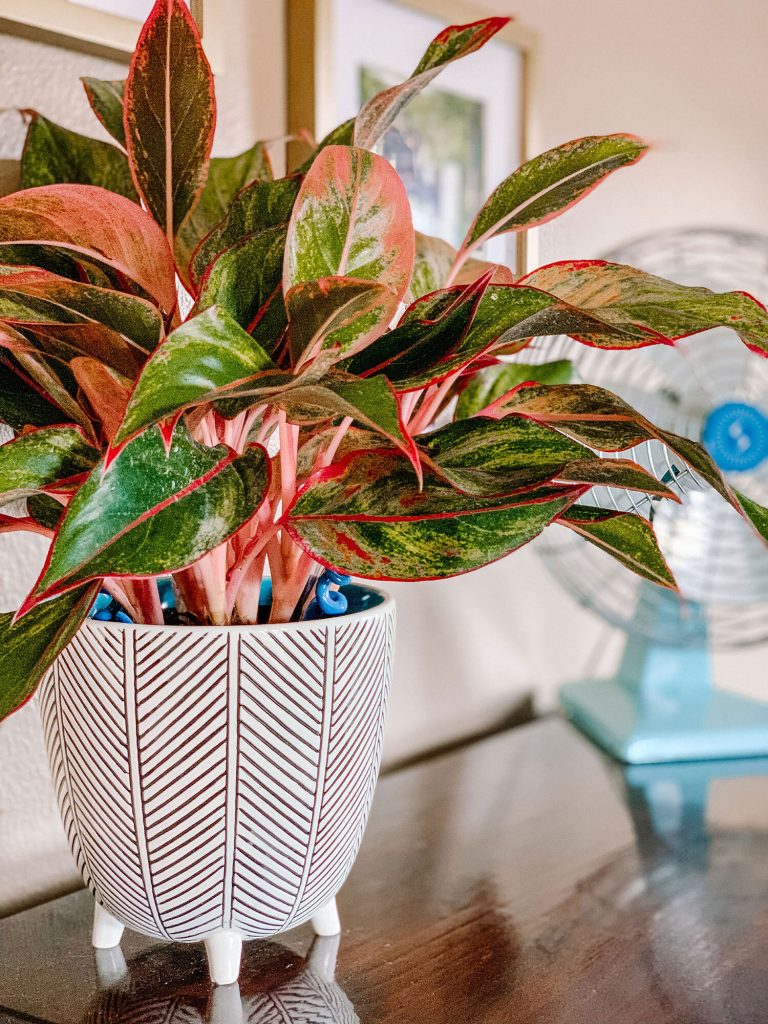
Your houseplant collection shouldn’t be complete without having Chinese evergreen added to it. This is quite an attractive gem and is often grown in many homes due to how easy it is to care for. It will definitely help add some colors to your home and it is one of the best foliage plants for purifying a room.
Chinese evergreen can be placed outside in the height of summer as well but it has to be brought inside once the temperature dips below 55 degrees F. It prefers high humidity so it will take dry air indoors.
Chinese Evergreen Plant Care Tips:
- It thrives in medium to low light and indirect sunlight as well
- It enjoys moderate watering
- Older Chinese evergreens should be fertilized once or twice yearly.
14. Prayer Plants
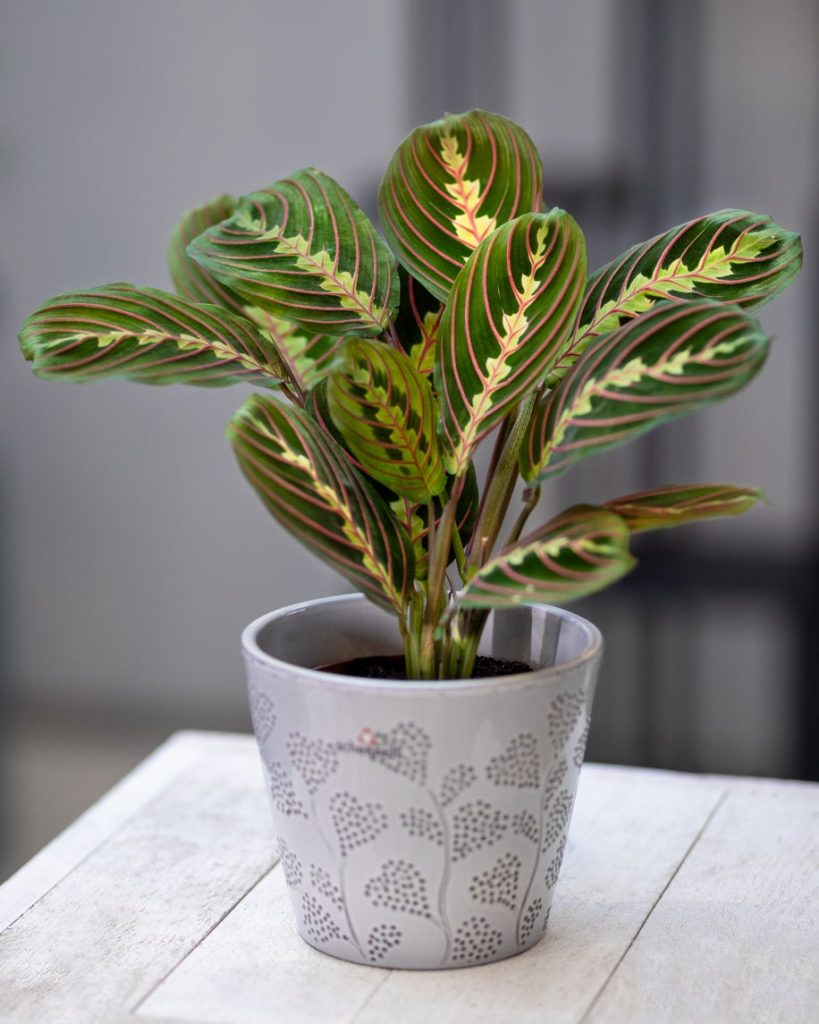
The prayer plant is a great indoor plant you will love for not just the colors but it purifies the air as well. The prayer plant is a low tropical plant and it does best in low light and high humidity. It is also a variable rhizomatous perennial and it features unique foliage with feathered painterly-like veins.
Prayer plants get their name from the way the leaves fold in a form of hands folded in prayer. The prayer plant needs to be kept moist but not soggy. The bold foliage makes it ideal for showing off on your shelves, window sills, or mantles.
Prayer Plant Care Tips:
- Feed prayer plant every two weeks and use warm water
- Requires high humidity
- Thrives in moderate indirect light
- Don’t overwater them.
15. Jasmine Plant
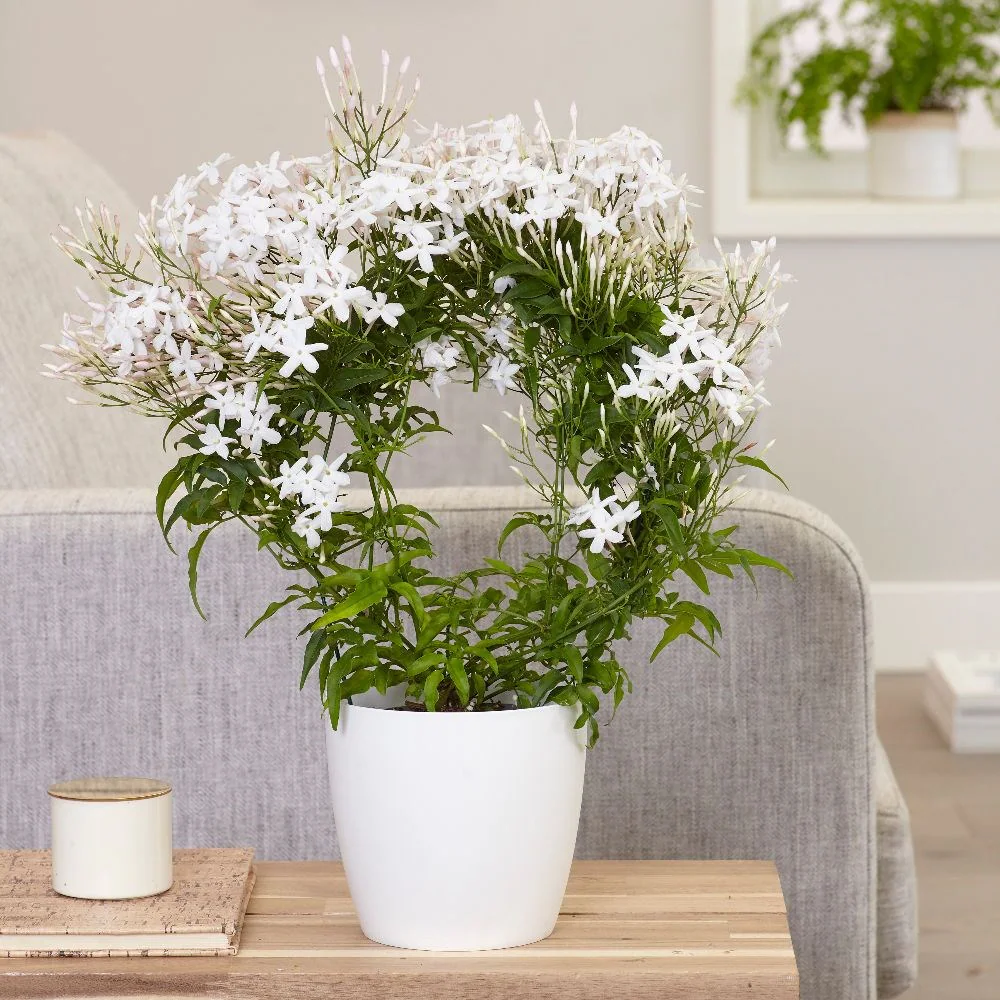
Jasmine is that cool indoor plant we don’t talk about enough. It will stay healthy and cool with well-circulated air and moist but not soggy soil is ideal as well. Jasmine’s indoor plant needs to be repotted frequently just like every other houseplant, but fresh soil has to be used every time.
There are several varieties of jasmine plants and each is really colorful and can live happily indoors. The most popular type of jasmine is the Jasminum polyanthum, it is attractive and easy to care for.
Jasmine Plant Care Tips:
- Needs regular watering but let it dry out before its next water
- Keep the temperature between 60 and 75 degrees F
- It does best in a bright sunny location
- Plant in well-drained slightly acidic soil.
16. Desert Gems Cacti
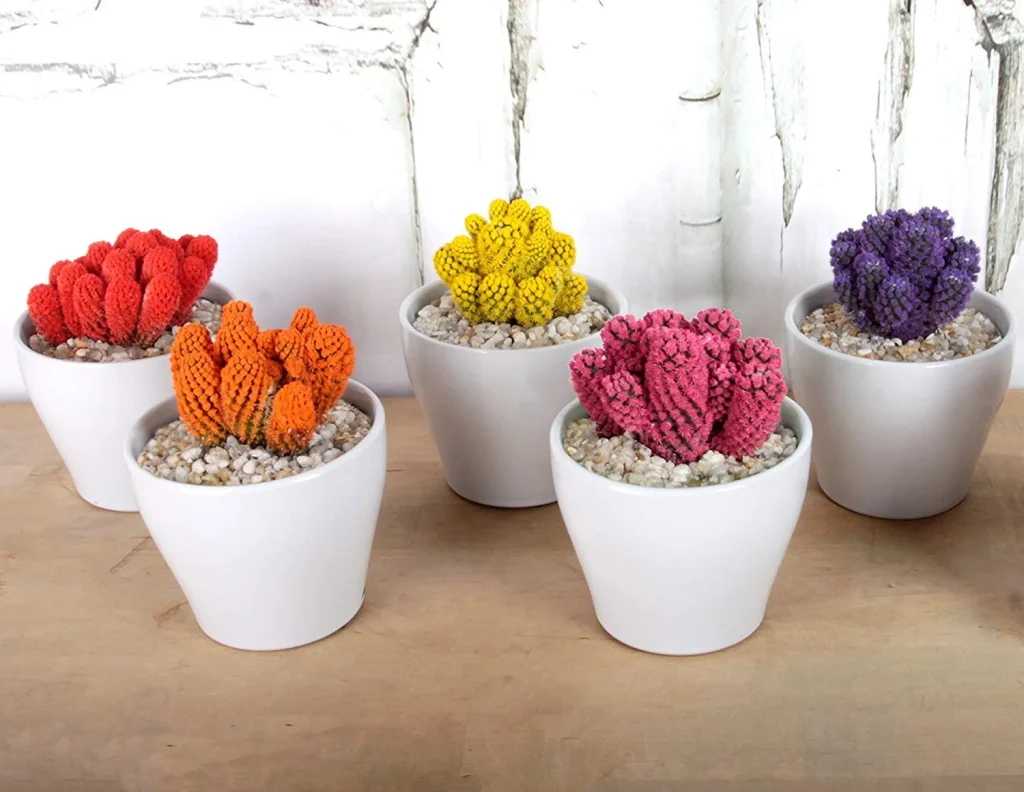
Desert Gems Cacti are often asked if they truly exist and yes they do, although they are quite rare. This houseplant is available in jewel-toned shades of topaz, fire opal orange, amethyst purple, sapphire blue, and emerald green. Dessert gems are like any natural cacti hence they grow just like any indoor plants.
Dessert gems cacti is a natural plant, and it turns the color scheme in their head, it’s an incredible houseplant for homeowners looking to beautify their home with natural plants.
Desert gems cacti care tips:
- It loves a bright sunny spot, particularly in a sunny, south- or west-facing windowsills
- Do not overwater, water once every 10 to 14 days
- They don’t require fertilizer but if you must, do so once a year
- They don’t require any pruning.
17. Purple Shamrock
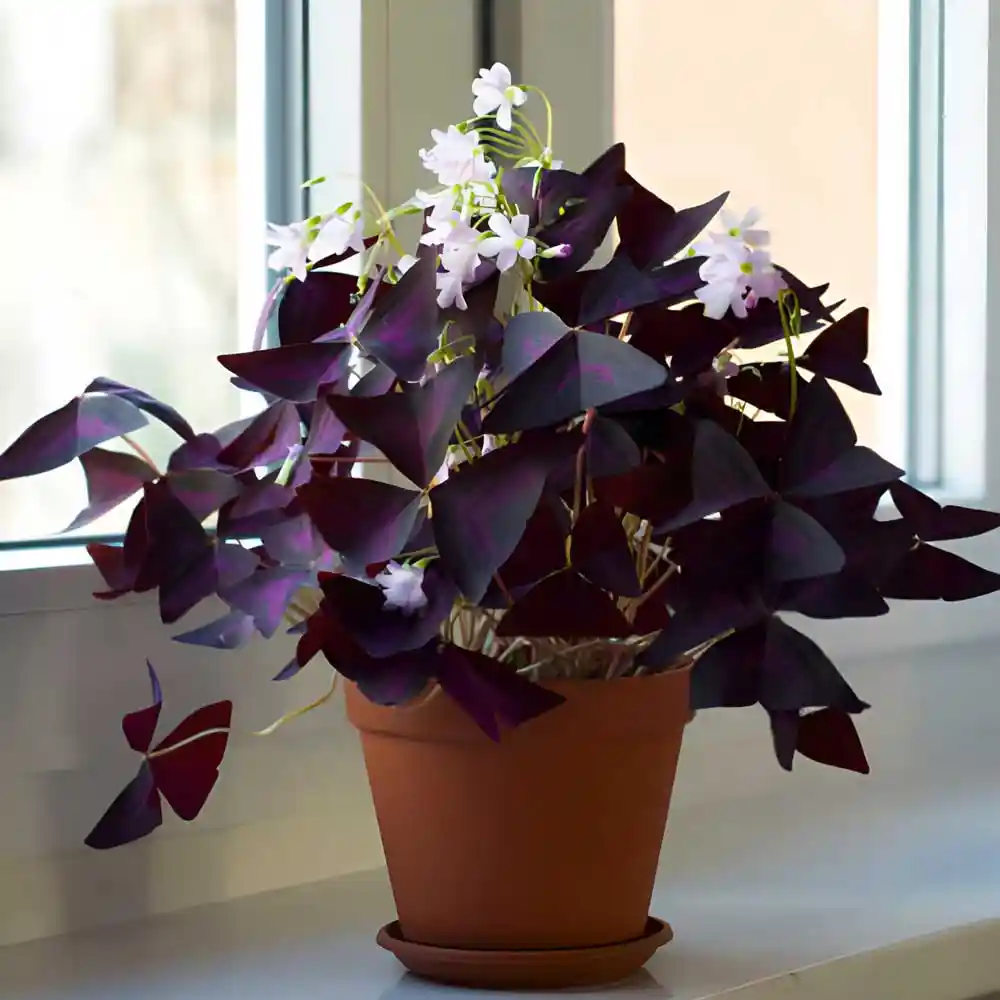
Purple shamrock is also known as purple clover, and it’s definitely an indoor plant you will love in your collection. This plant is fairly easy to grow in the ground within its growing zone outdoors or in containers indoors which is why it’s regarded as the happy-go-round plant, it can thrive anywhere. You can grow it indoors all year round and move it outdoors or to a shady patio during summer.
Purple shamrock tips:
- When growing indoors, make sure it gets 1 to 2 hours of mild direct sunlight a day
- As long as there is good drainage, it can grow in a variety of soil
- Water when the topsoil dries out
- Lightly every 2 to 3 weeks water in winter
- Can tolerate temperature down to 5 degrees.
18. Hawaiian ti Plant
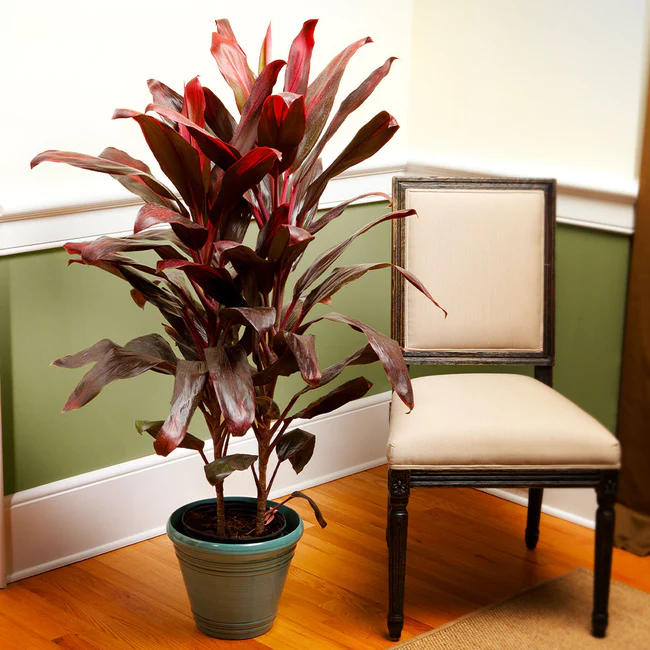
The Hawaiian ti Plant is an astonishing plant, it is a classic variety with dark purple to red foliage. It is a typical broadleaf evergreen tropical plant, and it has colorful palmlike leaves. Ti plant is one of the most colorful plants you can go for.
This is one of the most colorful foliage plants you can purchase and although it’s often grown as an indoor potted plant, it can be grown as a landscape specimen in tropical climates.
Hawaiian ti plant
- Grows best in deep well-drained, moist, fertile acidic soil that is high in organic matter
- It should be watered once per week or every other week
- Fertilize once every 3 to 4 months
- Trim dead or diseased foliage regularly.
19. Crown of Thorns
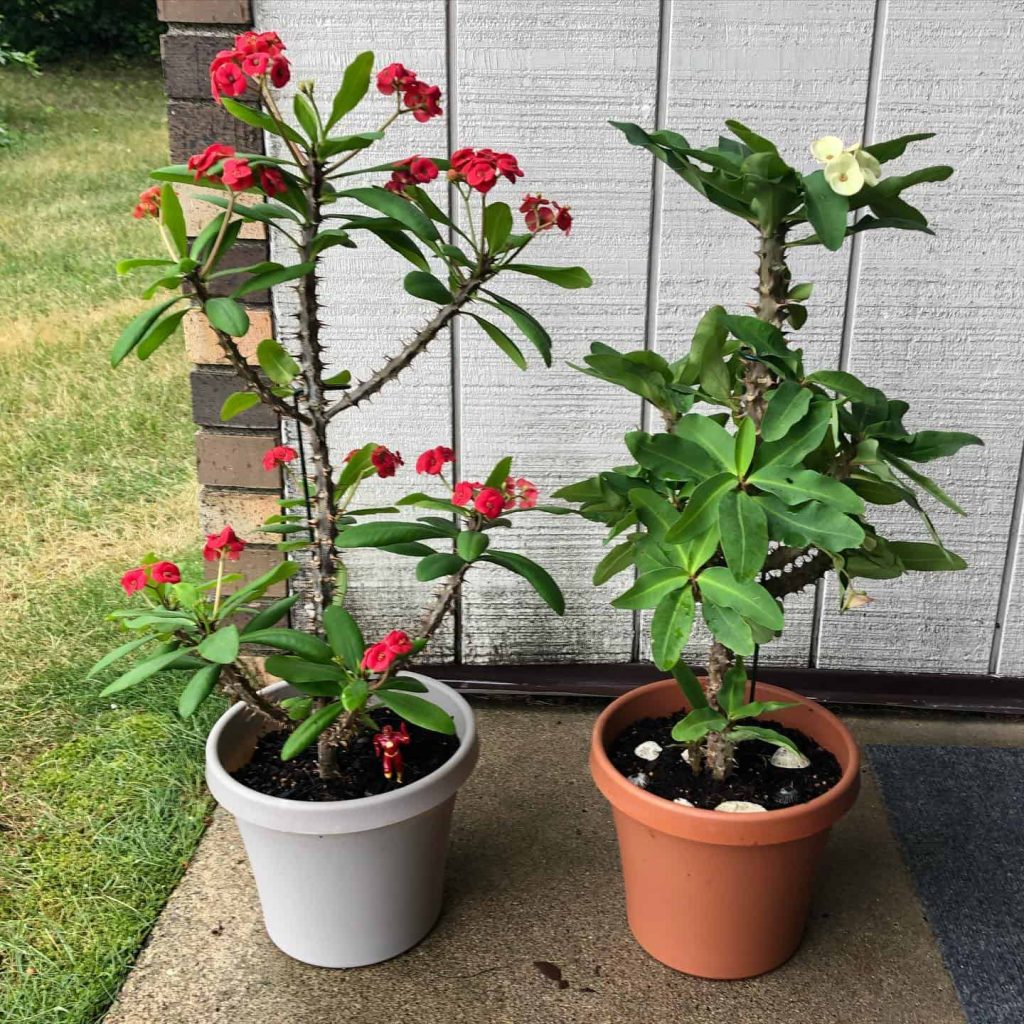
Looking for the best flowering plants? Crown of thorns is one of the stress-free best flowering plants you can grow indoors, it is a pretty succulent plant and can grow all year round. Crown of thorns is a southern garden plant, it is often grown as houseplants in colder climates.
The crown of thorns houseplant is also known as Christ thorn or Christ plant, with the right care and maintenance, this plant can grow to beautify your home and add some greenery to your scenery.
Crown of thorns tips:
- Only water when the top inch of the soil when the crown of thorns dries out
- Provide 3 to 4 hours of full sun every day
- Use liquid fertilizer every few weeks
- Monitor closely for pests or fungal diseases.
20. Clivia
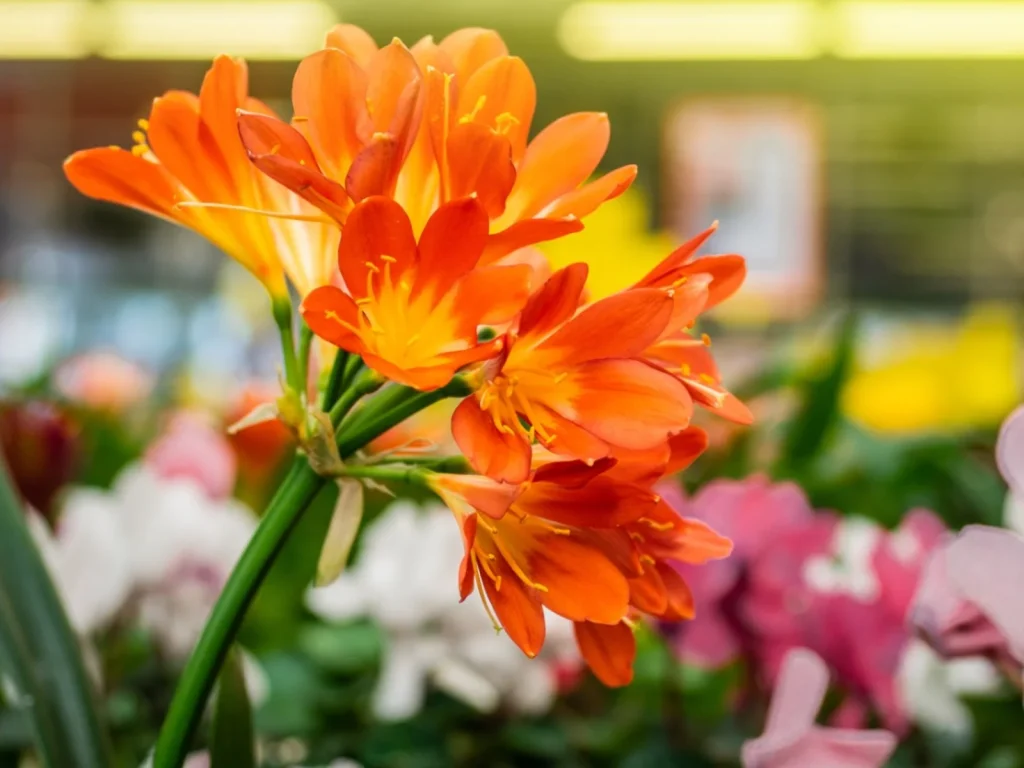
The clivia plant is a flowering plant that is also known as a bush lily. This is an elegant plant that will complement your home interior, it is a good alternative to winter-blooming plants such as amaryllis, azaleas, or holiday plants. Clivia is one of the most popular colorful houseplants, and it’s easy to care for.
Also, the clivia plant has clusters of flowers that are made up of individual star-shaped petals in orange to red brilliant color which further add to its beauty. So, even when they are not flowering, their foliage still makes up for their beauty.
Clivia tips:
- Plant in good light but avoid direct sunlight
- Water regularly in spring but sparingly in summer
- Propagate from offspring in spring
- Should be allowed to become dry to the touch before watering
- Fertilize once a month.
Final Thoughts
Since most of these indoor plants are low maintenance, even if you are a beginner you would do well in nurturing them so far you are familiar with their basic requirements.
Choose any of these brightly colored indoor plants and your home is in for an interesting change in appearance.
In case you’re buying more indoor plants:
